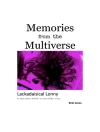The Lustful Turk (1828) is an anonymously written pornographic novel. Published by infamous London pornographers John Benjamin Brookes and William Dugdale, The Lustful Turk was adapted into a 1968 film by David Friedman. Notable for its blend of popular literary styles, including the epistolary narrative, the novel of sensibility, and Gothic romance, The Lustful Turk influenced countless authors of erotica from the Victorian era onward. In a series of letters to her friend Sylvia, Emily Barlow recounts her fateful voyage to India. Captured by pirates on the high seas, Emily is taken to the harem of Ali, a regent of Algiers. Held against her will, she is tortured and subjected to sexual acts previously unknown to her. When one of her letters is discovered by Ali, he organizes Sylvia’s abduction and reunites the friends in his harem. As the story unfolds, graphic sex gives way to a plot to violently overthrow Ali and free his many captives. The Lustful Turk is a controversial story that meets time-honored taboos head on, depicting graphic scenes of lust, castration, and rape. Condemned upon publication for obscenity, the novel is recognized today as an important work of Victorian erotica and as a harmful example of orientalist tropes. This edition of The Lustful Turk is a classic of pornographic literature reimagined for modern readers.
Since our inception in 2020, Mint Editions has kept sustainability and innovation at the forefront of our mission. Each and every Mint Edition title gets a fresh, professionally typeset manuscript and a dazzling new cover, all while maintaining the integrity of the original book.
With thousands of titles in our collection, we aim to spotlight diverse public domain works to help them find modern audiences. Mint Editions celebrates a breadth of literary works, curated from both canonical and overlooked classics from writers around the globe.
Giới thiệu về tác giả
Published anonymously in 1828 by infamous London publisher John Benjamin Brookes, The Lustful Turk was reprinted by noted pornographer William Dugdale and became widely circulated following the publication of a successful 1893 edition.












